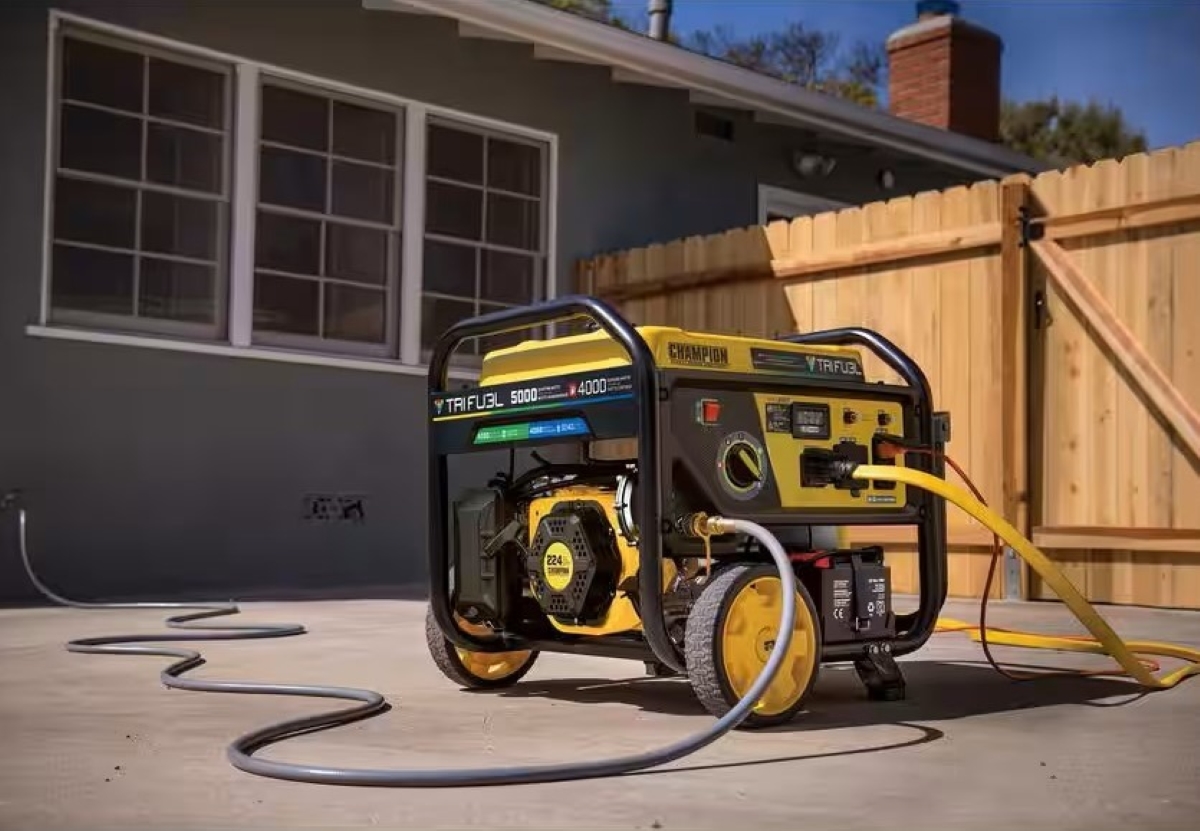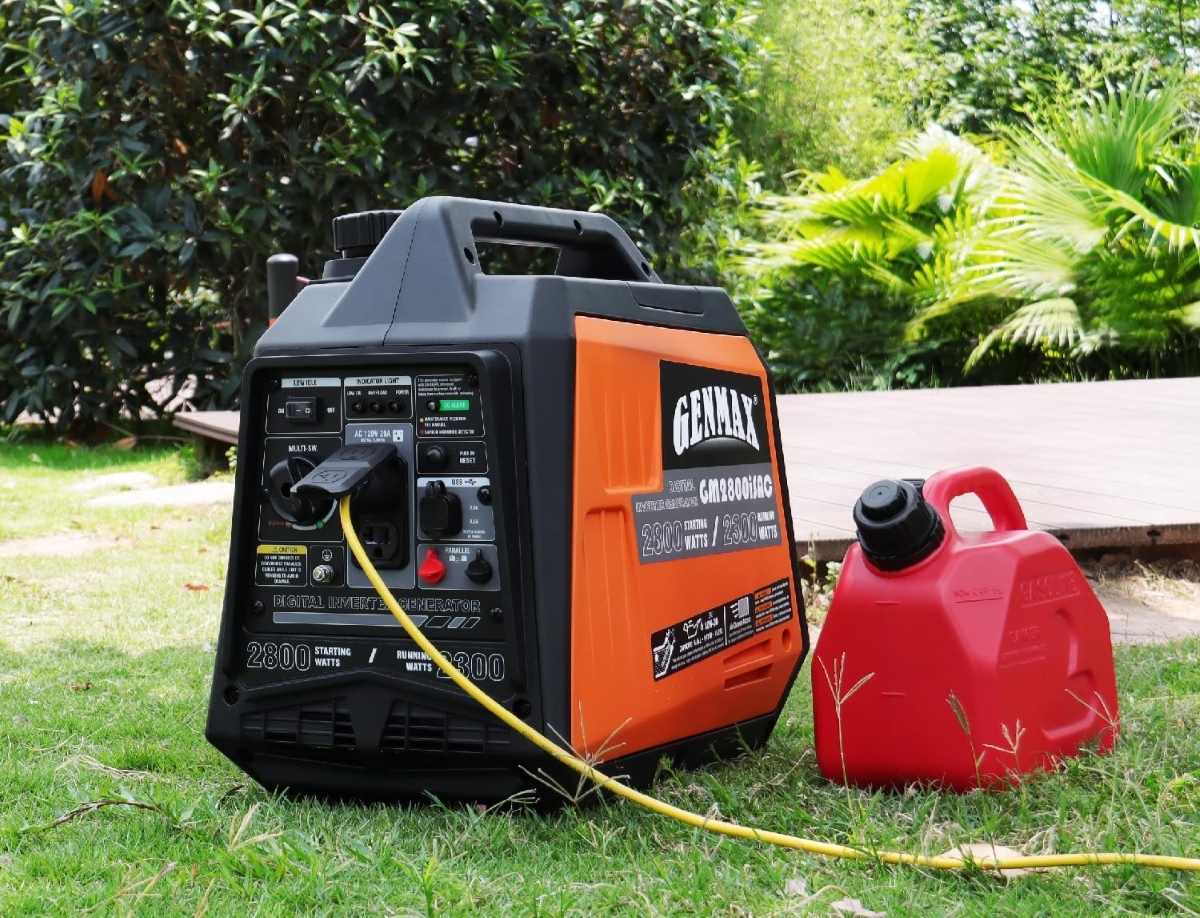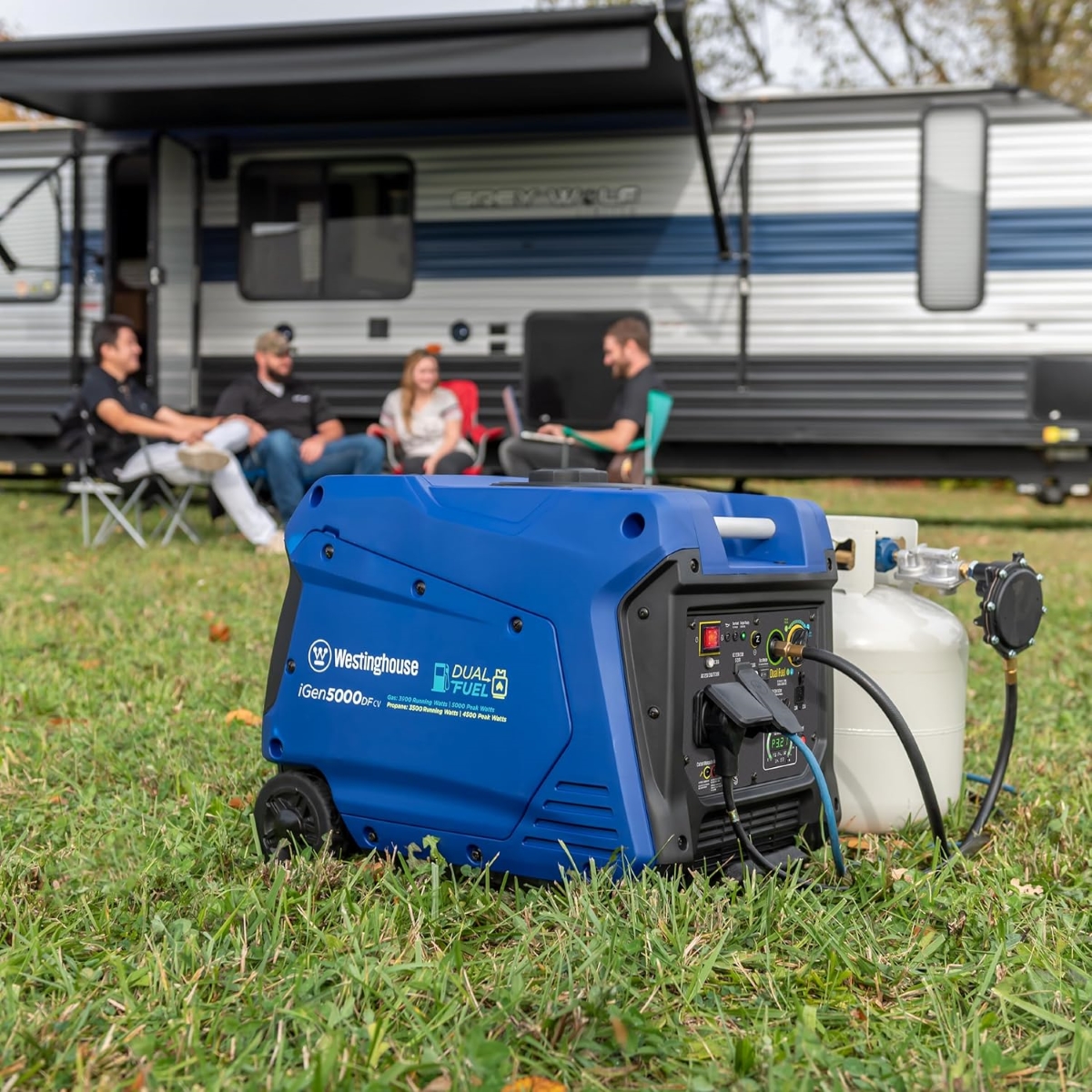We may earn revenue from the products available on this page and participate in affiliate programs. Learn More ›
Inverter generators have become increasingly popular over the past few years. They are promoted as being easier to use, quieter, and more economical than gas generators. They also tout fewer emissions, so they are more eco-friendly.
Exactly what is an inverter generator? Both modern and conventional generators produce electricity. They typically are portable and run on some form of fuel to convert mechanical energy into alternating current (AC) power. Through new technology, inverter generators then convert the AC power into direct current (DC) power, then back into AC power. The result is a more stable and cleaner power generation than in conventional generator technology.
But before you junk your old gas-guzzling monster and shell out on the latest technology, we ought to look beyond the hype, and answer a few key questions. What advantages does an inverter generator have over the regular models we’ve been using for decades? What are the downsides?
TRUE: Inverter generators run more quietly than regular generators.

First off, inverter generators have much better mufflers than those on conventional generators, which can look like little more than a bean can with holes in it. Second, a standard generator usually has a fixed speed, whereas on a quiet inverter generator, microprocessors regulate output.
Clement Feng, vice president of product management at Briggs & Stratton Energy Solutions, says: “A key reason why inverter generators operate more efficiently and quieter than conventional generators is because they adjust their engine running speed based on the electrical load. It’s similar to how a car engine revs up when it needs to provide more power. Conventional generators always run at the same speed, typically 3,600 RPM [revolutions per minute], no matter the electrical demand.”
It has also been said that inverter generators are quieter simply because they are smaller. Although historically this was true, they are getting bigger and more powerful all the time. Even large inverter generators still produce less noise than their conventional counterparts, however.
FALSE: An inverter generator produces less power than a comparable portable generator model.
Technically, there is some truth to this downside of inverter generators. But generator power is rated in watts (W), so a 5,000W portable inverter generator produces exactly the same power as a comparable 5,000W conventional portable generator. Motor sizes of typical competitors are similar too. The conventional Champion 5,000W generator has a 224cc gasoline engine, and so does the equivalent 5,000W inverter from Westinghouse.
However, if maximum power is the goal, then currently even the largest inverter generators cannot quite match regular models. The largest inverter we found is a Duromax rated at 16,000 watts, whereas the largest conventional found is a 28,000W model from Westinghouse.
TRUE: Inverter generators often are more fuel-efficient.
This is generally true, but modern conventional models can also be very efficient. It can be hard to tell, since manufacturers don’t often give fuel consumption figures for generators. Instead, they give estimated runtimes. The challenge here is that these are never provided at 100 percent load (maximum power output). Commonly, the runtime indicates 50 percent load, but even this is not a standard.
Once again, the Champion and Westinghouse models offer a comparison. The conventional Champion runs for up to 14 hours at 50 percent load, and has a 5-gallon fuel tank. The inverter Westinghouse runs for up to 18 hours from a 3.4-gallon tank but that’s at 25 percent load. So while it’s true that inverter generators are very fuel efficient it’s important to assess each model on its full specifications.
FALSE: All inverter generators run exclusively on gasoline as a fuel source.

This was true a few years ago, because when they first appeared, a gasoline inverter generator was your only choice, but this is no longer the case. Today, many of the best inverter generators are available as dual-fuel models.
The dual fuels we are talking about are gasoline and propane. In other words, dual-fuel inverter generators can be attached to a standard 20-pound propane tank as an alternative fuel source. It’s important to point out that maximum power output is lower when using propane because it doesn’t burn as efficiently as gasoline. For example, the Westinghouse generator featured above drops from 5,000 watts to 4,500 watts while on propane as a source.
TRUE: Inverter AC power is safer for plugged-in electronics.
This is true, with some clarification. Most conventional generators also produce AC power. The problem is that their output fluctuates. This is called total harmonic distortion (THD). Anything above 6 percent THD can harm electronic devices, and conventional generators deliver anywhere from 9 percent to 30 percent.
The THD on inverter generators can be as low as 3 percent, and seldom varies. In fact this is where the “inverter” name originates, since an inverter generator first produces standard AC, then inverts it to DC. Complex electronics clean up the signal, and invert it back to AC that is now safe for laptops, tablets, phones, and other sensitive electronics.
FALSE: Inverter generators are less expensive than most portable generators.
The investment you need for a small inverter generator will generally buy you a considerably more powerful conventional model. Whether it’s worth the investment will depend on your needs. If you want something lightweight that’s safe for electronics, an inverter generator is a must. If you want something that can power the whole house, it’s likely to be a conventional model.
That said, it is possible to find some very good deals on inverter generators. When investigating the best generator brands recently, we found that Ryobi, WEN, PowerSmart and Sportsman all offer competitive options.
TRUE: Generally small and lightweight, inverter generators are easy to set up and transport.

This is how inverter generators initially gained popularity. They were much smaller and lighter than conventional models, making it more practical to take a generator camping or tailgating. Most were also easy to start, something that was often a challenge with traditional generators.
However, inverter generators aren’t all small. For example, the Duromax 16,000 watt is a large enough inverter generator for home use, and meets many of the requirements found in our useful guide to how big of a generator you need in an emergency.
FALSE: All running inverter generators need more frequent refueling.
This depends on one’s definition of “frequent.” The PowerSmart 2,350 watt inverter generator is a compact model that weighs just 40 pounds. The fuel tank is only 1.05 gallons, but it will run for up to 10.5 hours at 25 percent load. The popular Honda EU2200 has a fuel tank of just 0.95 gallons, but will run for around 8 hours at 25 percent load. Yes, there are conventional generators that need refueling less often, but they are also much bigger and heavier. It’s important to assess which matters most before choosing.
TRUE: Many inverter generators can be connected together in parallel for more power.
Connecting inverter generators in parallel can literally double the power output available. However, it’s not simply a question of mixing and matching any two inverter generators. Some are not parallel-capable. Those that are must also be of the same output voltage and frequency to prevent damage to one or the other. They don’t have to be identical models, but it is the easiest route. You will also need a suitable parallel cable or kit to link them up.
FALSE: Inverter generator lifespan tends to be on the shorter side.
Lifespan is very difficult to assess because conditions of use and maintenance can make a huge difference. According to several independent sources, inverter generators typically will last between 1,000 and 2,000 hours when properly looked after. With average use, this could equate to around 10 to 15 years. That’s not really a short lifespan, and is similar to lifespans quoted for conventional portable generators.
A note about generator safety: All generators produce carbon monoxide (CO) which is potentially lethal. Even small inverter generators should never be used indoors. The American Red Cross offers more detailed safety advice.


